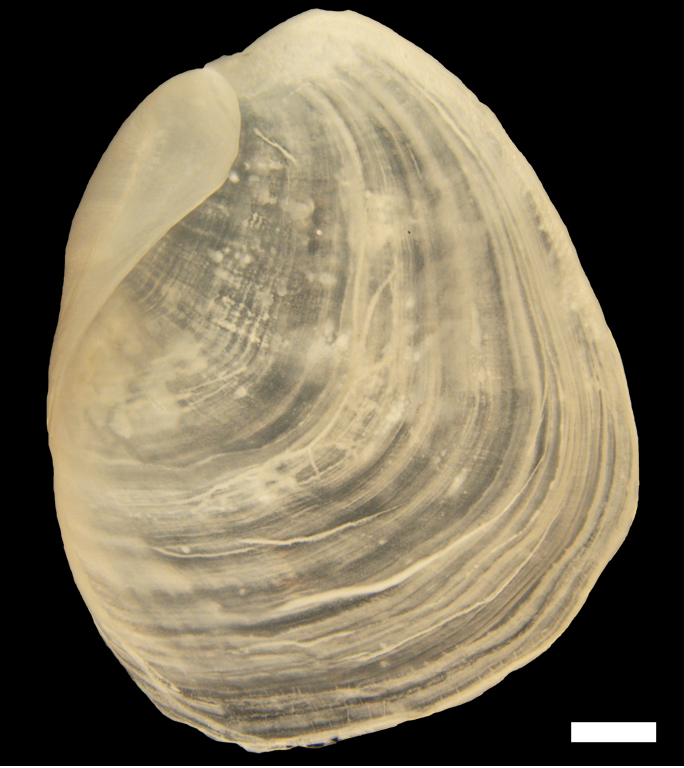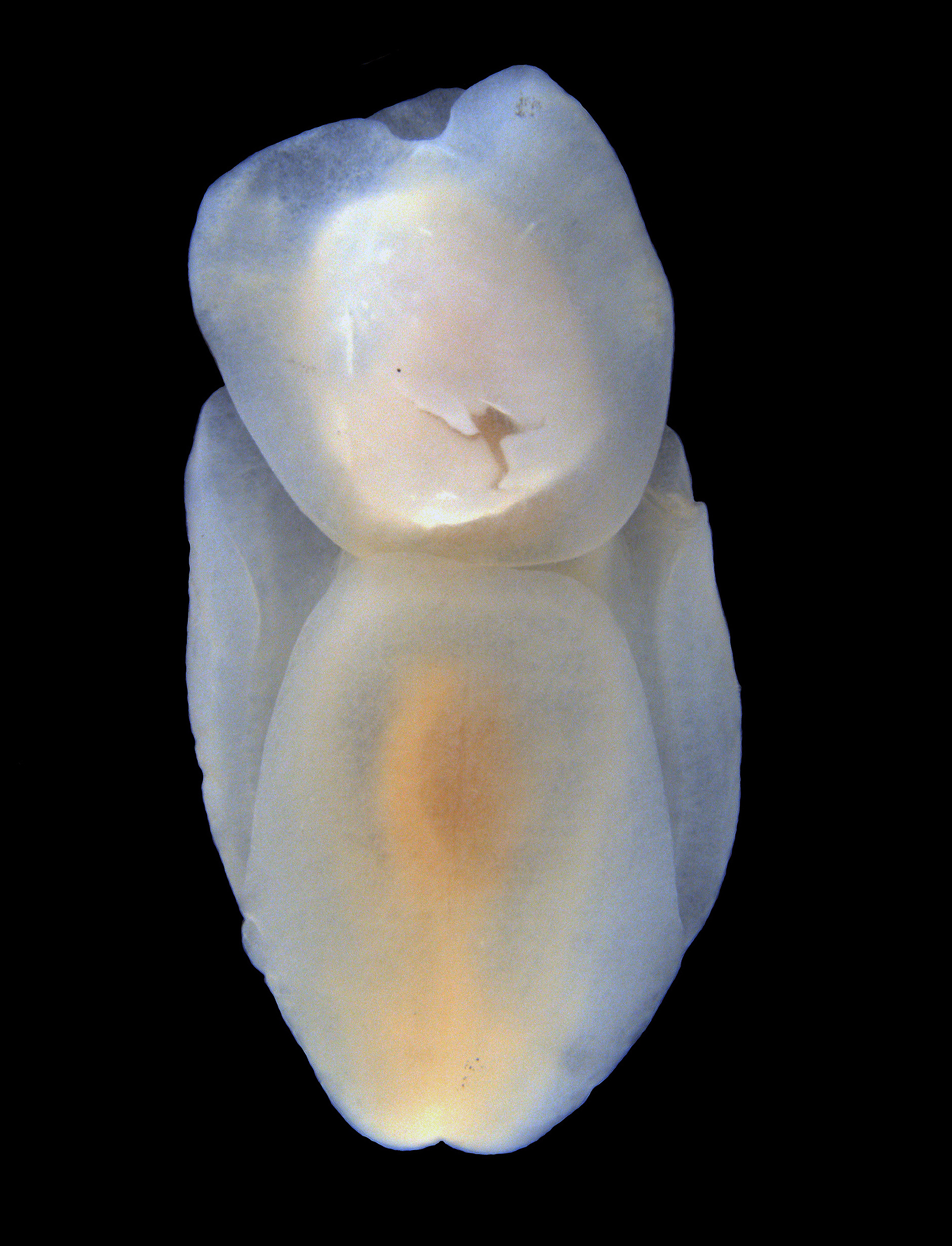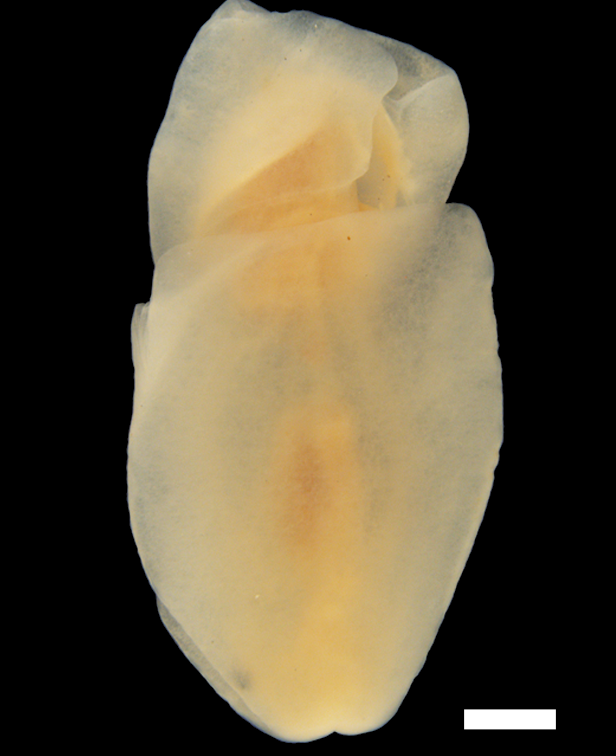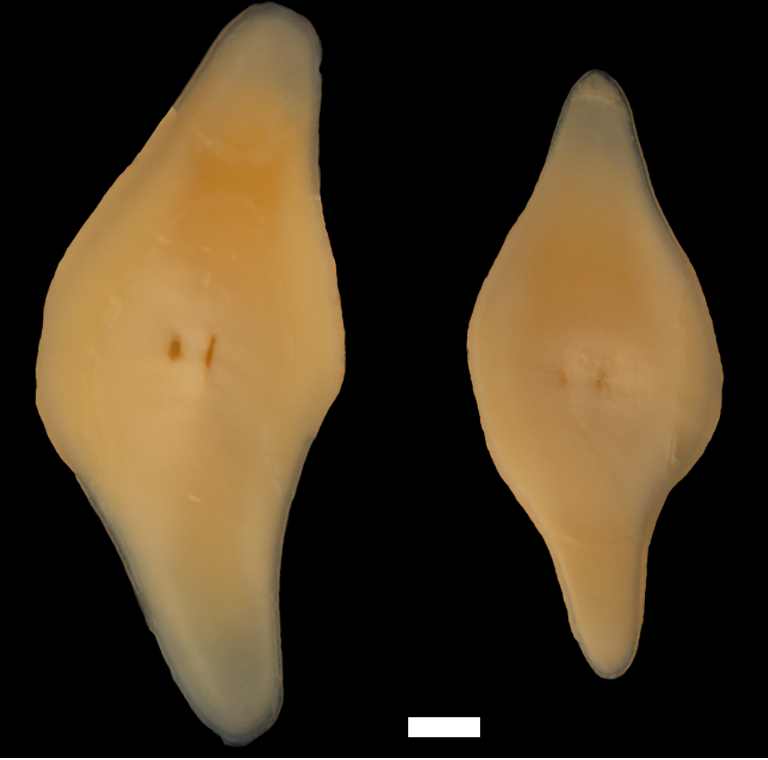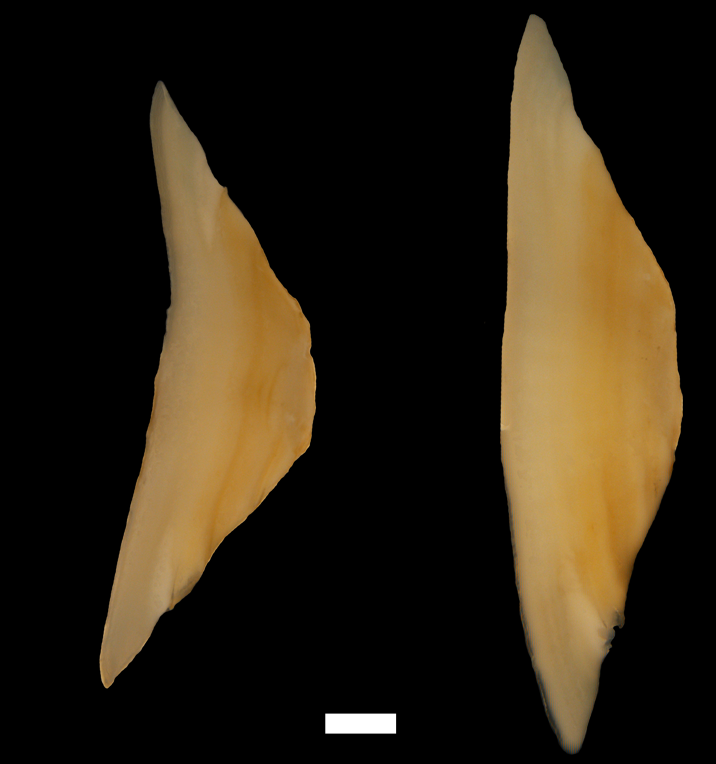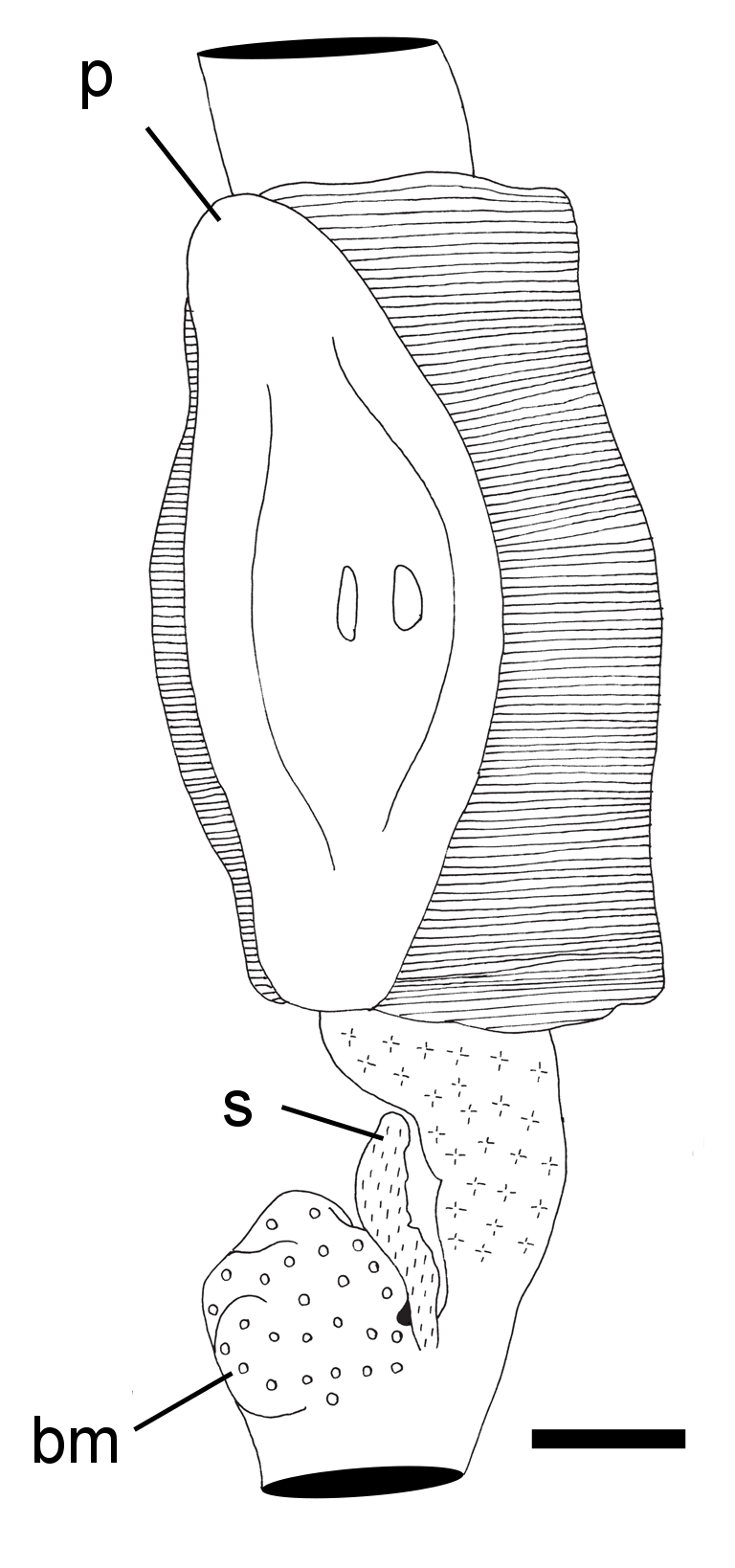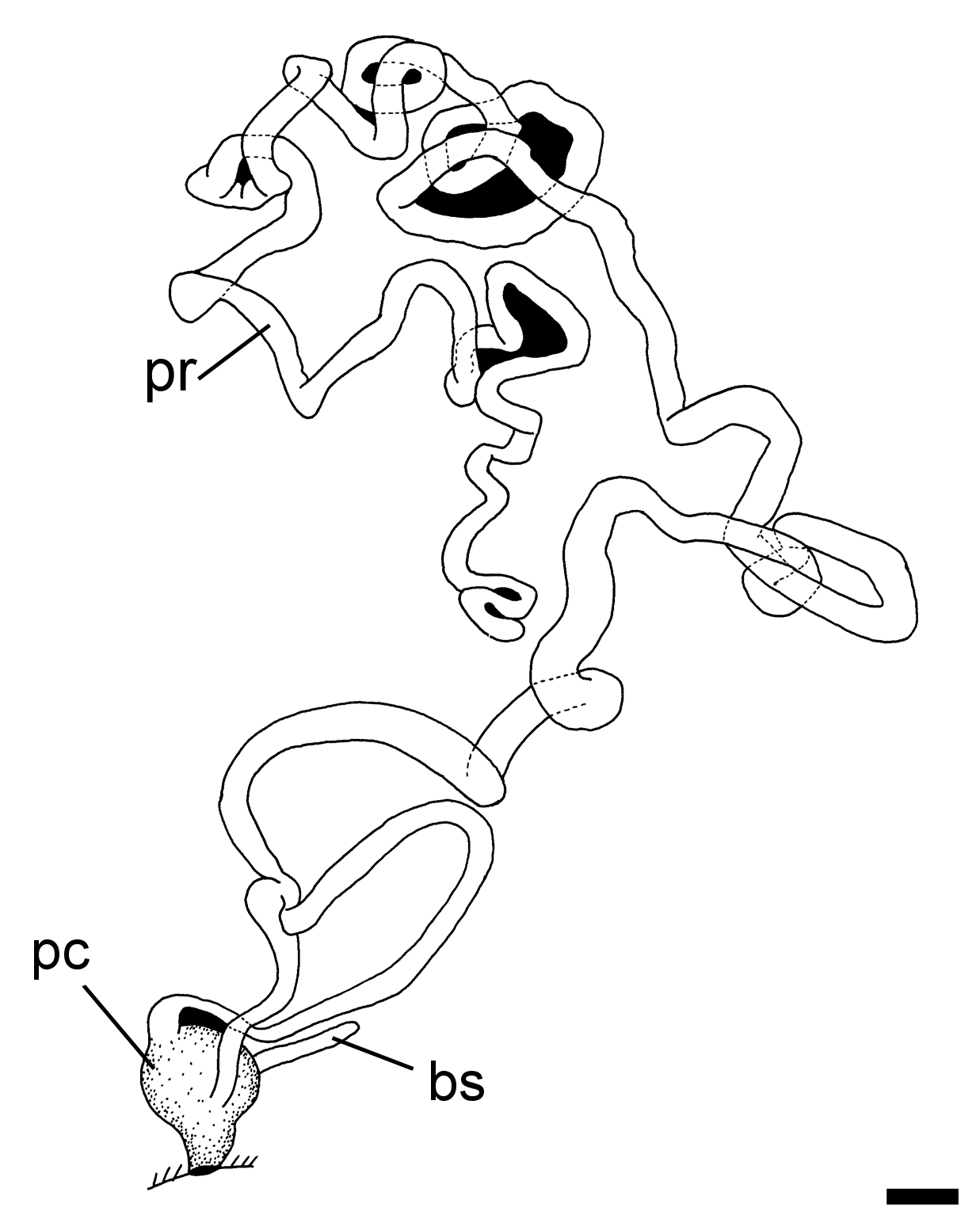Philine quadripartita
Shell description
The shell is internal and whitish transparent in colour. The shell shape is oval when viewed from above. The opening is very wide and the edge is smooth. The top of the shell (apex) is blunted, slightly sunken and some of the whorls form flat layers. The shell is not umbilicated. The surface of the shell is smooth and has no apparent pattern. The size of the shell varies between 3.5–17 mm.
Animal description
The body is whitish transparent in colour, and the head shield may be slightly indented and a middle groove is present. The tissue covering the shell (mantle) is thick and has a notch towards the back. There are side extensions of the foot (parapodial lobes).
Anatomy
The radula consists of 28 rows of teeth, with one inner lateral tooth on each side; outer laterals and central (rachidian) teeth are absent. The inner lateral teeth are curved with rounded tips and a broad base, the inner edge bears denticulation. The salivary glands are slightly longer than the part of the foregut holding the radula (buccal mass). The gizzard is elongate cylindrical, not surrounded by muscular fibres and contain gizzard plates. There are two larger paired plates that are curved and one smaller symmetrical plate. The surface of the plates is brown to yellowish in colour while the underside is creamy. On the underside of these plates there are two pores; in younger specimens these pores may go all the way trough. The prostate is long, thin and the tubes is wound together and obviously separated from the sack shaped penis chamber. This chamber has a blind sack, which holds the upper smooth part of the penis, which is hammer shaped.
Ecology
Occurs down to 140 m on sand, brown algae, and mud. The veliger larvae settle down in areas overgrown by eel grass and move to muddy substrate after two years. The diet consists of gastropods, bivalves, and polychaets, as well as foraminiferans and soft-bottom echinoderms, which are taken alive or recently deceased. Philine quadripartita is eaten by the brittle star Ophiocomina nigra, some flatfish, and haddock, which they try to avoid by secreting sulphuric acid.
Geographical distribution
In Norway south of Fleinvær (67°10′N) along the entire coast. Faeroes, Shetland, British Isles, North Sea, Baltic Sea, Mediterranean Sea, Black Sea, Cape Verde Islands.
References
Ohnheiser LT og Malaquias MAE (2013). Systematic revision of the gastropod family Philinidae (Mollusca: Cephalaspidea) in the northeast Atlantic Ocean with emphasis on the Scandinavian peninsula. Zoological Journal of the Linnean Society 167(2): 273-326. DOI: 10.1111/zoj.12000.

